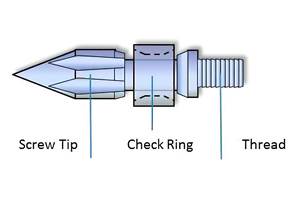Microcellular Foam with Heat-Cool Makes Class-A Glossy Parts
A high-gloss surface equivalent to automotive Class-A solid molding can now be achieved with the weight savings and other benefits of microcellular foam molding, thanks to a new licensing agreement between Trexel Inc., Waltham, Mass., and Ono Sangyo Co.
A high-gloss surface equivalent to automotive Class-A solid molding can now be achieved with the weight savings and other benefits of microcellular foam molding, thanks to a new licensing agreement between Trexel Inc., Waltham, Mass., and Ono Sangyo Co. Ltd. (OSK) of Japan (onosg.co.jp). Another recent industry alliance has created a MuCell Trial and Development Center in the Detroit area to allow automotive OEMs and Tier 1 molders to experiment with the process. Meanwhile, Trexel has just completed the sale of its MuCell Extrusion unit, which it had spun off into separate ┤¾¤¾┤½├¢ with a partner.
These industry alliances are part of Trexel’s new strategy to enhance its MuCell foam technology and expand its presence in industry. As explained by recently appointed Trexel president Steve Braig, this strategy is aimed at transitioning MuCell from its current niche status into a “generally accepted process enhancement” where users take advantage of the technology’s “full value proposition.” To get there, Trexel aims to focus on training OEMs and Tier 1 processors to “think MuCell.”
The patented MuCell process injects a pressurized gas (nitrogen or carbon dioxide) into the injection barrel. When the melt expands in the mold, it forms tiny bubbles that aid flow and help pack out the part without stresses and with lower injection and clamp pressures, potentially allowing use of smaller presses. Benefits include weight savings up to 25%, cycles up to 40% faster, and absence of sinks and weld lines. OEMs are also said to be interested in the smaller carbon footprint of parts made with MuCell
CLASS-A MUCELL
Good news for automotive molders is the ability to achieve all these advantages while achieving the equivalent of a Class-A glossy surface, free of the usual splay caused by gas bubbles. Aimed at auto interior parts, the new solution is the result of applying OSK’s Rapid Heat Cycle Molding (RHCM) technology to MuCell. RHCM technology, also known as Variotherm or Heat/Cool molding, is patented globally by OSK. Under license from OSK, Trexel can now offer RHCM technology to customers, using a combination of steam and cooling water to thermally cycle the mold from hot to cold. Trexel also can supply the Steam Jet heat/cool mold control system, produced by Matsui Mfg. Co. in Japan (matsui-mfg.net).
Although not necessarily relevant to automotive today, Braig notes that Trexel has experimented with MuCell and RHCM using PLA biopolymer. “They were beautiful parts,”he says.
‘THINK MUCELL’
For customers to “think MuCell” and take full advantage of its benefits means not merely applying the microcellular process to conventional part designs, but engineering parts for the process from the beginning. To help reach that goal, Trexel formed a strategic partnership with Proper Group International, a moldmaker based in Warren, Mich. (propergroupintl.com). Proper houses Trexel’s newest center for customer trials and application/process development. It currently has two machines of 1100 and 3000 tons equipped for MuCell. Trexel has completed training and MuCell certification of a group of Proper’s tooling engineers and designers.
EXTRUSION SPINOFF
In 2008, Trexel created MuCell Extrusion LLC in partnership with Zotefoams plc (zotefoams.com), a major extruder of polyolefin foams based in the U.K. and with a plant in Walton, Ky. In March, Zotefoams bought out Trexel’s remaining share of the extrusion ┤¾¤¾┤½├¢. This will allow Trexel to focus on its core injection molding ┤¾¤¾┤½├¢ and on automotive blow molding applications, such as ducts, fluid bottles, and air intakes for trucks and other large diesel engines. Final density reductions of 15% to 20% were obtained in early blow molding trials.
Related Content
Got Streaks or Black Specs? Here’s How to Find and Fix Them
Determining the source of streaking or contamination in your molded parts is a critical step in perfecting your purging procedures ultimately saving you time and money.
Read MoreA Systematic Approach to Process Development
The path to a no-baby-sitting injection molding process is paved with data and can be found by following certain steps.
Read MoreUsing Data to Pinpoint Cosmetic Defect Causes in Injection Molded Parts
Taking a step back and identifying the root cause of a cosmetic flaw can help molders focus on what corrective actions need to be taken.
Read MoreProcess Monitoring or Production Monitoring — Why Not Both?
Molders looking to both monitor an injection molding process effectively and manage production can definitely do both with tools available today, but the question is how best to tackle these twin challenges.
Read MoreRead Next
Lead the Conversation, Change the Conversation
Coverage of single-use plastics can be both misleading and demoralizing. Here are 10 tips for changing the perception of the plastics industry at your company and in your community.
Read MoreFor PLASTICS' CEO Seaholm, NPE to Shine Light on Sustainability Successes
With advocacy, communication and sustainability as three main pillars, Seaholm leads a trade association to NPE that ‘is more active today than we have ever been.’
Read More











